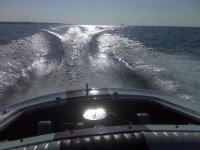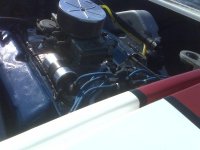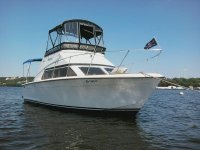Dan...... my comments and questions and quoting you for the sake of conversation only:
You have referred to the OEM curve. I assume that you're using an OEM Marine curve, and that you are not comparing Automotive curves to that of Marine.
Auto/Marine..... Apples/Artichokes!
Several of us have tried to find an OEM Chrysler Marine Ignition curves for some time now, and we keep coming up short!
We can find BASE advance all day long.
Can you post this Marine curve graph for the Chrysler guys?
Set initial to 4 to 6 degrees MAX. DO NOT ALLOW TO GO OVER 30 DEGREES, 28 PREFERRED TOTAL WHEN USING 87 PUMP ETHANOL.
Bring the max timing in at 2600 and you will have the best you can get with 87 Ethanol.
Again Dan..... conversation only.
For me..... a TA number is rather meaningless without an associated RPM.
I'm not into the Chrysler Marine engines, but I am into the GM SBC Marine engines.
That said...... both SBC and the 318/360 family offer some similarities regarding cylinder angles, cylinder head chamber design, etc. etc.
For a GM SBC Marine Engine, Ignition Advance that is full in @ 2,600 rpm could be asking for trouble in the form of "detonation".
Which further leads me to my question re; a Chrysler Marine Ignition curve graph.
No argument, Dan..... I'm just curious as to see an actual Chrysler Marine Ignition curve.
As you know, the goal is LPCP. Many will suggest that LPCP be at/near 12* to 14* ATDC.
Spark lead and eventual combustion influence LPCP. I often refer to this as though the Ignition Event has the "last word" at placing LPCP correctly.
You also referred to using the OEM curves with today's Ethanol laden gasoline could cause detonation.
I fully agree, but again I'd have to ask,
what OEM curves?
Keep the sunscreen out of you bellybutton
Dan, I'll take your word on that one.

Here in Oregon we don't have enough sunshine to worry about it much!
.




